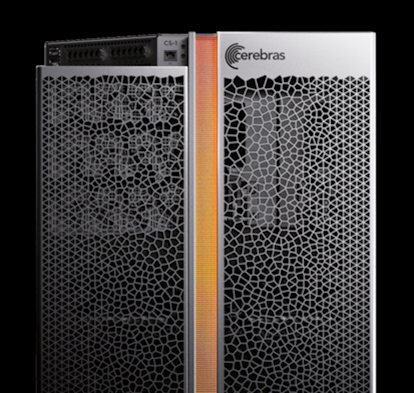Crosscutting Capabilities
The Science-based Artificial Intelligence and Machine Learning Institute (SAMI) aims to leverage science-based models, artificial intelligence and machine learning (AI/ML) methods, data analytics, and high-performance computing to accelerate applied technology development for clean, efficient, and affordable energy production and utilization. This vision is successfully executed through several crosscutting capabilities that have been developed and enhanced over the last 15 years. NETL researchers work closely with stakeholders and partners to outline issues, emerging trends, and areas of need.
Click on the images below to learn more!
Smart Data Platform
EDX supports a variety of AI/ML research needs by ensuring:
- Long-term curation of both historic and current data, and information from a wide variety of sources
- Reliable access to research that crosscuts multiple NETL projects and programs, and energy science needs
- Efficient discovery of data and information, including technical products from NETL-affiliated research
- Innovative analytics to support today’s research needs, including supporting secure collaboration and coordination between various agencies, organizations, and institutions through EDX’s Collaborative Workspaces.
High Performance Computing Facilities

Center for Artificial Intelligence and Machine Learning
WATT
- NETL’s Center for Artificial Intelligence and Machine Learning (CAML) houses computer hardware and software allowing researchers to explore problems using AI and ML.
- The center features a machine designed to house, transport, and process up to 19 petabytes of data using cutting-edge algorithms developed by NETL and external collaborators.
- Links 104 GPUs with 19 petabytes of storage to provide unparalleled opportunities.


Center for Computational Science and Engineering: JOULE 2.0
- NETL is home to Joule 2.0, which is among the fastest, largest, and most energy-efficient supercomputers in the United States.
- The powerful 4-petaflop system allows researchers to simulate energy technologies at various scales with the help of physics-based models such as density functional theory, molecular dynamics, Monte Carlo simulations, microkinetic models, phase-field models, computational fluid dynamics, and others.
- Most of the research projects at NETL use such simulations to save time and resources in support of successful technology development.


AI/ML Modeling
NETL researchers use science-based simulation models, mathematical methods and algorithms, and software tools required to address the technical barriers to the development of next-generation energy technologies. This is achieved by combining theory, AI/ML modeling, advanced optimization, experiments, and stakeholder input to simulate complex advanced energy processes, resulting in virtual prototyping.
Click on picture to download/open animation (wmv file).
Data driven proxy models can inform new or existing energy systems on operational improvements, diagnostics, prognostics, digital twins, cyber security, virtual sensing, cyber-physical modeling and increased fidelity for process level models. The model can run in near real-time on a standard computers, laptops, tablets.
AI/ML Hardware
NETL collaborates with Cerebras Systems using their acclaimed CS-1 system, the largest chip ever built. The demonstration showed that it could perform a key computational fluid dynamics (CFD) workload more than 200 times faster and at a fraction of the power consumption than the same workload on an optimized number of cores of the Lab’s supercomputer, JOULE 2.0. Further development of this unique computational architecture could lead to a paradigm shift in NETL’s high-performance computing (HPC) efforts and help overcome challenges facing researchers as they design and model next-generation energy systems.
A Wafer-Scale Engine – the largest chip ever built – powers the deep learning system Cerebras CS-1

CS-1 has the potential for speeding up Computational Fluid Dynamics

Cerebras Workshop at NETL on 9/16/20
QUEST: Quantum for Energy Systems and Technologies
Quantum Information Science (QIS) is expected to profoundly change the practice of science and engineering in the coming decades. QIS technology exploits quantum phenomena for performing tasks that are impossible to do today, such as finding prime factors of large numbers or elucidating reaction mechanisms in complex chemical systems. It is a rapidly progressing field, fueled by large investments from the private sector and governments. Its importance to the U.S. economy and national security is underscored by the National Quantum Initiative Act passed in December 2018, which creates a coordinated multiagency program to support research and training in QIS.
For more information about AI/ML capabilities, please see the QUEST brochure.








